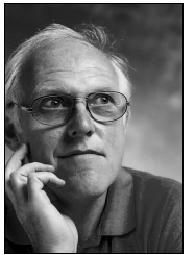Michael Brady

From pure mathematics, to computing and to robotics, Mike Brady’s life has spanned three continents and a trail of successes! A fascinating story of quest and discovery that started by being an anonymous undergraduate in UMIST, and ending up as Professor Michael Brady, FRS, FREng, BP, and a few other strings of letters that fade in comparison!
Mike Brady obtained his Mathematics degree from Manchester in the mid-sixties. He must have been really determined and known what he wanted from life in order to move to the other side of the world in order to do his PhD, given that there must have been plenty of PhD opportunities in any of the UK universities. Nevertheless, the young Mike Brady went all the way to Australia to work under the supervision of Bernard Neumann and obtained his PhD in pure Mathematics in less than 3 years, from the Australian National University.
But the quest was not over: pure Maths is beautiful, but there must be something equally beautiful which is closer to real problems in life. Computers started looking exciting at the time, and the idea of building a machine that can reason fascinated the restless mind of the young Doctor of Philosophy. He found a copy of the proceedings of a computer conference and wrote to all participants asking for a postdoctoral position. He had 7 positive responses out of the 70 letters he wrote, one of them a lectureship at Essex University to teach Computer Science, having never seen or used a computer till then! Five years later he was publishing his first book, //Theory of Computer Science//! The idea of building a machine that can reason was still in the forefront of his quest and his first success was a system that could read hand-written Fortran programming sheets.
With his first book out, Mike set off for a homage to the shrine of Engineering, the MIT lab. It would have been difficult to go to MIT at the time and not be awed by the American might: the average graduate student had at his disposal more computing power than the whole of Essex University! The place was a hive of activity in research. It was the place that made things happen! Mike went for a sabbatical year and stayed intermittently for almost 10 years. At last he could build machines that could see and reason. Mike was happy in his robotics lab at MIT, until a telephone call from Oxford in 1985 put him on the spot: staying at MIT, or taking up the challenge to start from the beginning again and build his own robotics lab in Oxford. Fortunately for the UK, Oxford won: in 1985, Mike left MIT to take up the newly created Professorship in Information Engineering at the University of Oxford. At Oxford he founded the Robotics Laboratory and the Medical Vision Laboratory (MVL).
Nowadays, he combines his work with a range of entrepreneurial activities:. He serves as a non-executive director on the Boards of Directors of Oxford Instruments, AEA Technology, and, until recently, Isis Innovation (Oxford University’s intellectual property company). He is a founding Director of the start-up companies Guidance and Control Systems, Oxford Medical Image Analysis (OMIA), and Oxford Intelligent Visualisation and Analysis (OXIVA). Shortly he will be taking up the Directorship of the recently announced EPSRC/MRC Inter-disciplinary research consortium entitled From Medical Images and Signals to Clinical Information.
In addition, he has authored or co-authored over 250 articles in computer vision, robotics, medical image analysis, and artificial intelligence. He is author or editor of nine books, including: Robot Motion (MIT Press 1984), Robotics Science (MIT Press 1989), Robotics Research (MIT Press 1984), and Mammographic Image Analysis (Kluwer, January 1999). He is the editor of the Artificial Intelligence Journal, and a founding editor of the International Journal of Robotics Research. He is a member of the Editorial Board of fourteen journals, most recently of Medical Image Analysis.
Professor Brady was elected a Fellow of the Royal Academy of Engineering (UK) in 1991 and a Fellow of the Royal Society (UK) in 1997. He is a Fellow of the Institution of Electrical Engineers and a founding Fellow of the Association of Artificial Intelligence, and a Fellow of the Institute of Physics. He is a member of the Conseil Scientifique de I’INRIA in France. He has been awarded honorary doctorates by the universities of Essex, Manchester, Liverpool, Southampton, and Paul Sabatier (Toulouse). He was awarded the IEE Faraday Medal for 2000 and the IEEE Third Millennium Medal for the UK. He is the 2001 BMVA Distinguished Fellow!